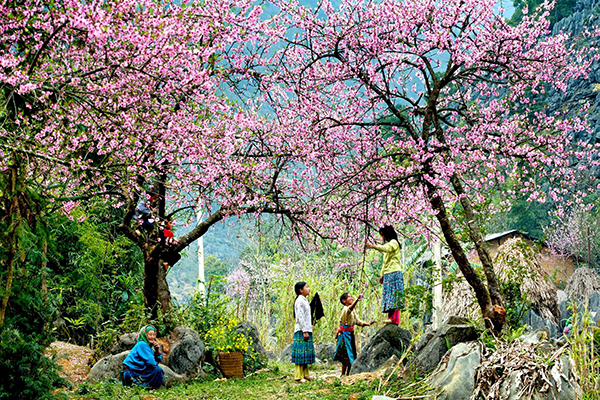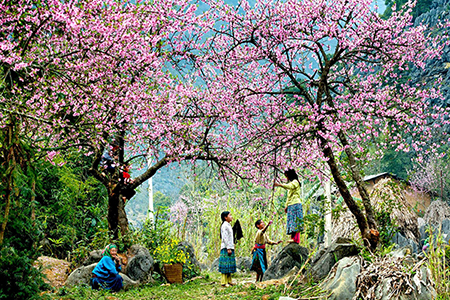Tay Bac (the Northwest) has always seduced me as the Shangrila of my old dreams, not to mention the halo of Dien Bien Phu it has been surrounded by since 1954.
Then a four-day visit I paid recently to Moc Chau, a plateau at an altitude of more than one thousand meters, enabled me to better appreciate the picturesque and charm of the many ethnic groups inhabiting this vast border region. I came for the first cultural and sporting festival of Tay Bac organized there at the close of winter.
Vietnam, with a population of about 70 million, represents a veritable ethnic mosaic. The Viet (or Kinh) who account for 86 percent of the population, live mostly in the plains while the 53 other ethnic groups totaling from five million to six million people are mainly found in mountain areas which make up two-thirds of the national territory.

The Moc Chau festival gathered a dozen ethnic groups coming from the provinces of Hoa Binh, Son La and Lai Chau. Among the participants were the Thai, the Muong, the Hmong (Meo), the Dzao and the Ha Nhi. The shows were given in a sort of amphitheatre surrounded by cloud-clad limestone mountains. The march-past and calisthenics in the district stadium were a feast to the eye, with multi-colored traditional clothes mingling with blouses, T-shirts, and jeans. The motley crowds were enchanted by traditional sports and games - arbalest shooting by H’mong lasses in gaily embroidered skirts, sung kip (flintlock) shooting, throwing of papao (cotton ball) between young men and women, competitions with tulu (whipping tops) and nem con which consists in throwing a cloth hall through a circle fixed at the top of a pole. A touch of mmlernism was added by volley-ball and soccer as well as the western musical instruments accompanying traditional ones like the khen (panpipe) the bamboo flute and the dan moi played by blowing on a leaf.
"I love you, forever and very much!
Many years have gone by without seeing you in the liver.
The boat misses you and the river misses you..."
Five Ha Nhi girls had had to walk five days over hill and dale to find a bus to take them to the festival. And that was just for the pleasure of appearing in a choir accompanying a dance that lasted only ten minutes. This shows how much people in remote regions crave for cultural amenities.
The need has become all the greater for several years now with the visible improvement in the livelihood of certain sections of the mountain population as a result of the switch to a market economy. Many families in Hoa Binh can now make a comfortable living by selling purple sugarcane to people in the plains. In Moc Chau, apricots and plums constitute the major source of income. The plateau also boasts a big dairy farm and a vast tea plantation and will have even a silk-making factory in the near future.



